► Audi’s updated Q4 e-Tron tested
► Range of up to 342 miles, better efficiency claims
► Simpler spec list and suspension tweaks
No, it’s not just you – there are indeed loads of Q4 e-Trons on UK roads right now. Audi’s electric SUV is incredibly popular; it had 17,465 registrations in 2024 and was the second best-selling EV last year, beaten only by the Tesla Model Ys which sold 32,862.
So what’s it actually like? Surely north of 17,000 people can’t be wrong? To find out, we’ve driven the Q4 e-Tron extensively on UK roads – most recently this winter after our Audi S3 long-termer was in for repairs.
At a glance
Pros: Quiet, roomy, smooth to drive, well-equipped, trustworthy range
Cons: Weak and inconsistent brakes, Black Edition 21s interrupt low-speed ride, fiddly steering wheel controls
What’s new?
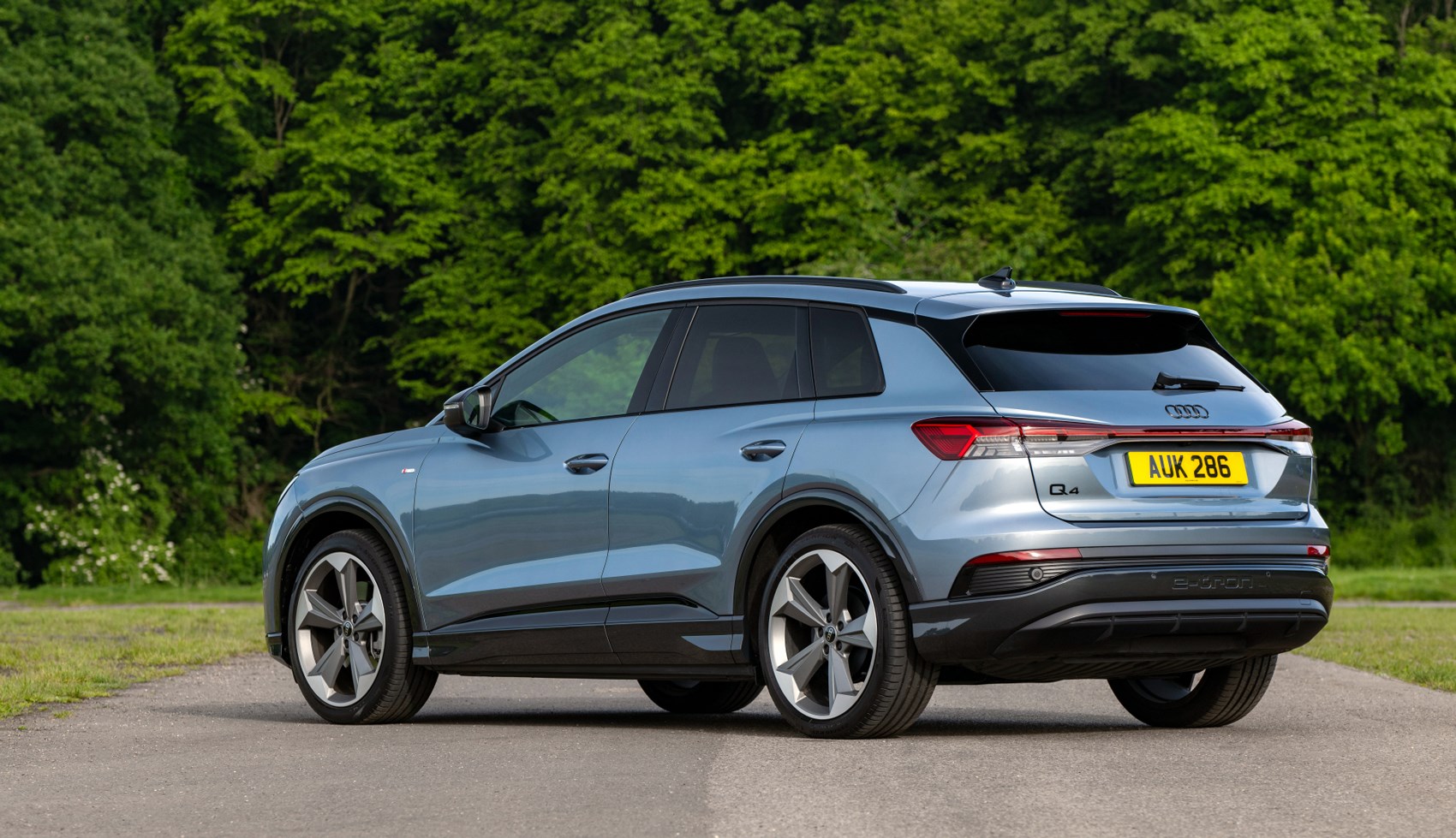
Audi introduced some revisions to its Q4 e-Tron (and its coupe-like Sportback model) towards the end of 2023, so we’ve had another go in the updated model. Not much has changed at all visually, with the design staying relatively the same – it’s the stuff under the bodywork that’s been given a kick.
The Q4’s steering and suspension have been tweaked, for example, with all models getting what Audi calls more responsive steering and revised suspension tuning. Fresh safety tech – some of it mandatory to comply with General Safety Regulation 2 standards – has been included.
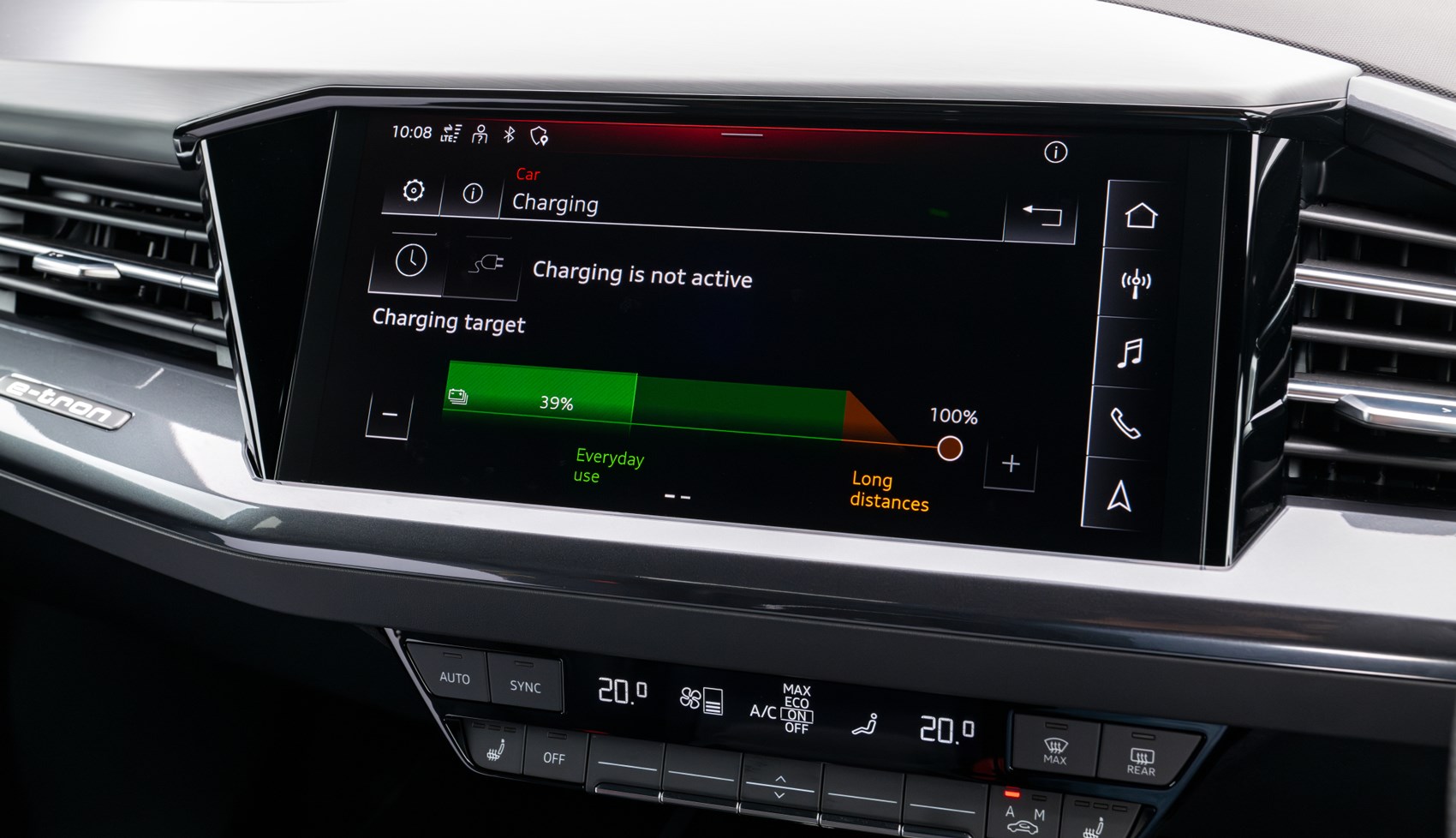
The options list now includes more driver assistance tech, including a new assisted lane change function as part of the adaptive cruise control. To preserve the battery, the car’s software has been updated to include a protection function that allows you to stop charging at 80 (rather than 100) per cent.
What are the specs?
As well as the engineering changes, the Q4’s spec list has been simplified a little – so much so that there are now only two power options and both use a 77kWh usable battery pack. The 281bhp ‘45’ version is available in a single-motor or quattro twin-motor configuration, while the 335bhp ‘55’ version is quattro-only. We’ve driven both here. The 45 model claims up to 342 miles, while both quattro versions claims up to 320 miles.
Your specs are Sport, starting at £51,965 through S line (from £54,565) to Black Edition, starting at £56,765. This also applies to the Sportback model, too, with a small price bump.
What about the interior?
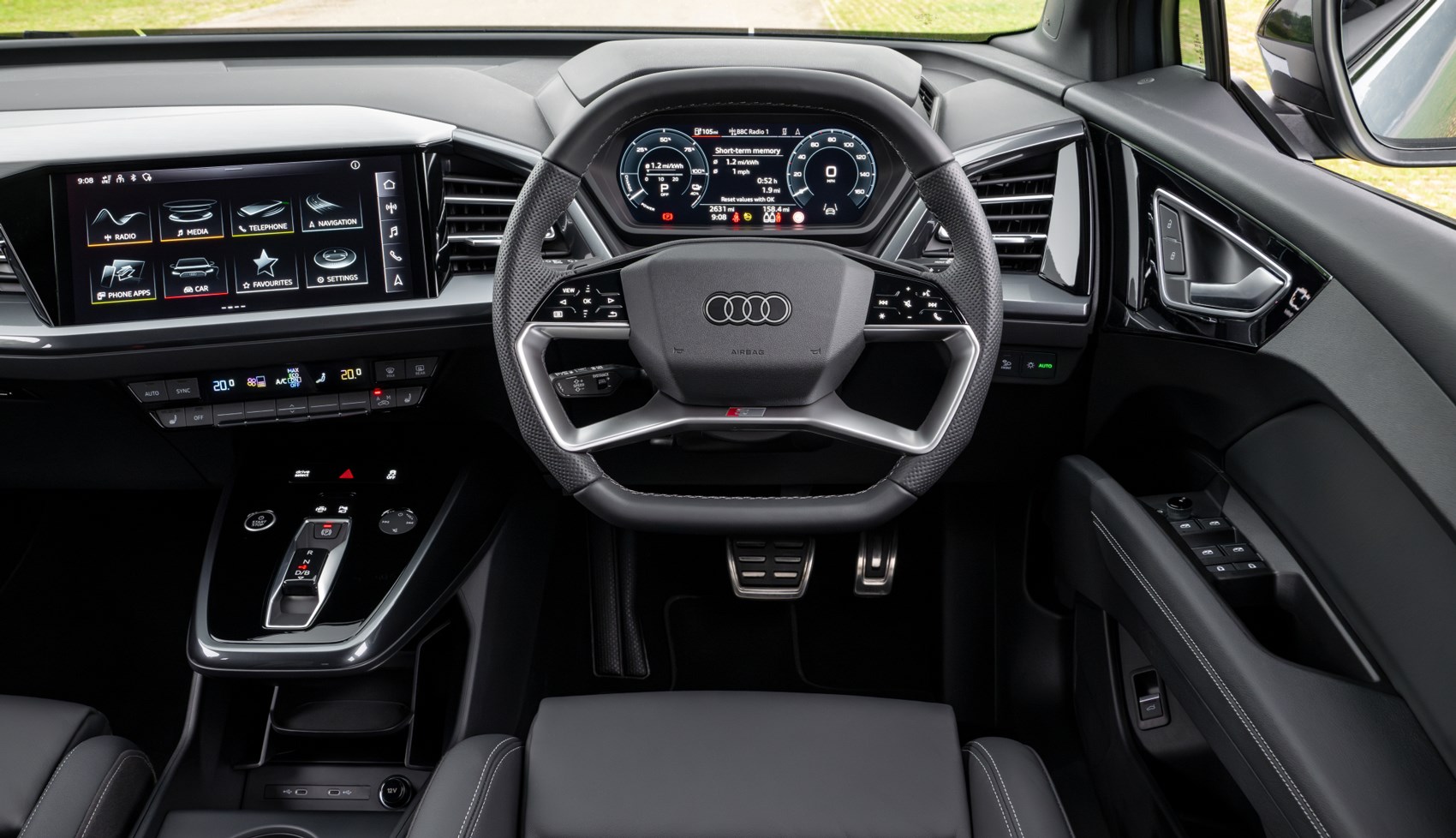
Despite being Audi’s least expensive EV and having heavy DNA links to the Volkswagen ID. family, the Q4’s cabin feels up there in terms of quality and design with higher models. We applaud some of Audi’s ergonomics here, including a conventionally placed drive selector, physical climate controls, a good seating position and not one but two generous cubbies in the front doors.
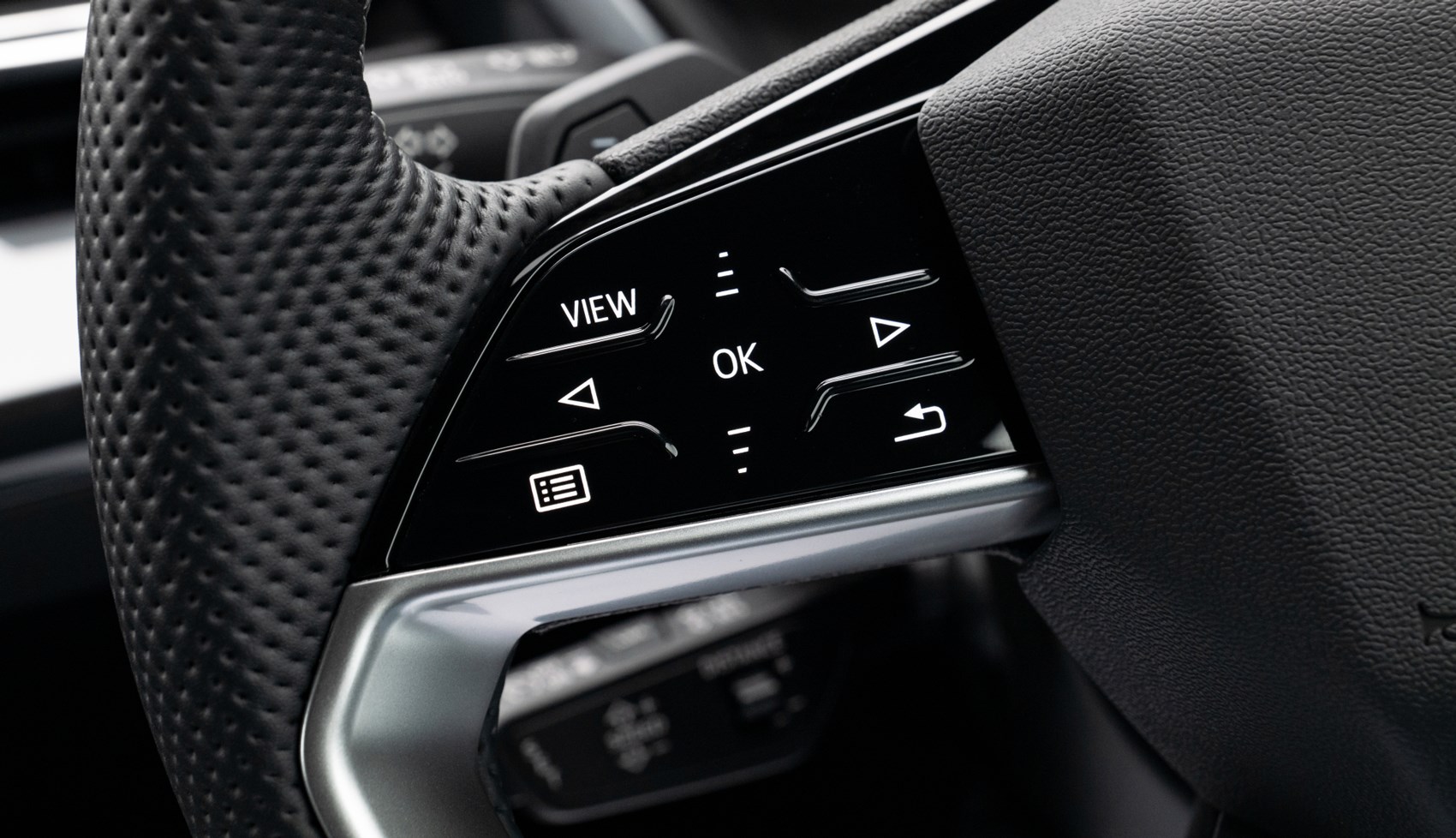
It’s not perfect, mind. The door materials feel quite scratchy, and the quartic steering wheel available on upper trims is weird to get used to and prevents certain smooth hand motions through tight turns. Audi’s also fallen foul of those haptic buttons that have plagued and beleaguered VW; they’re fiddly, and you don’t know without looking what you’re pressing.
They proved problematic on a number of occasions, resulting in countless mishaps in our time with the car. Within minutes of getting in the Q4, the unwanted phone calls began – with our first, second and third to the understandably alarmed delivery driver late that day.
It wasn’t long before we longed for the S3’s ‘dumb’ but incredibly intuitive and reliable physical buttons. ‘If it ain’t broke, make it a touchscreen,’ as the saying must go in Ingolstadt…
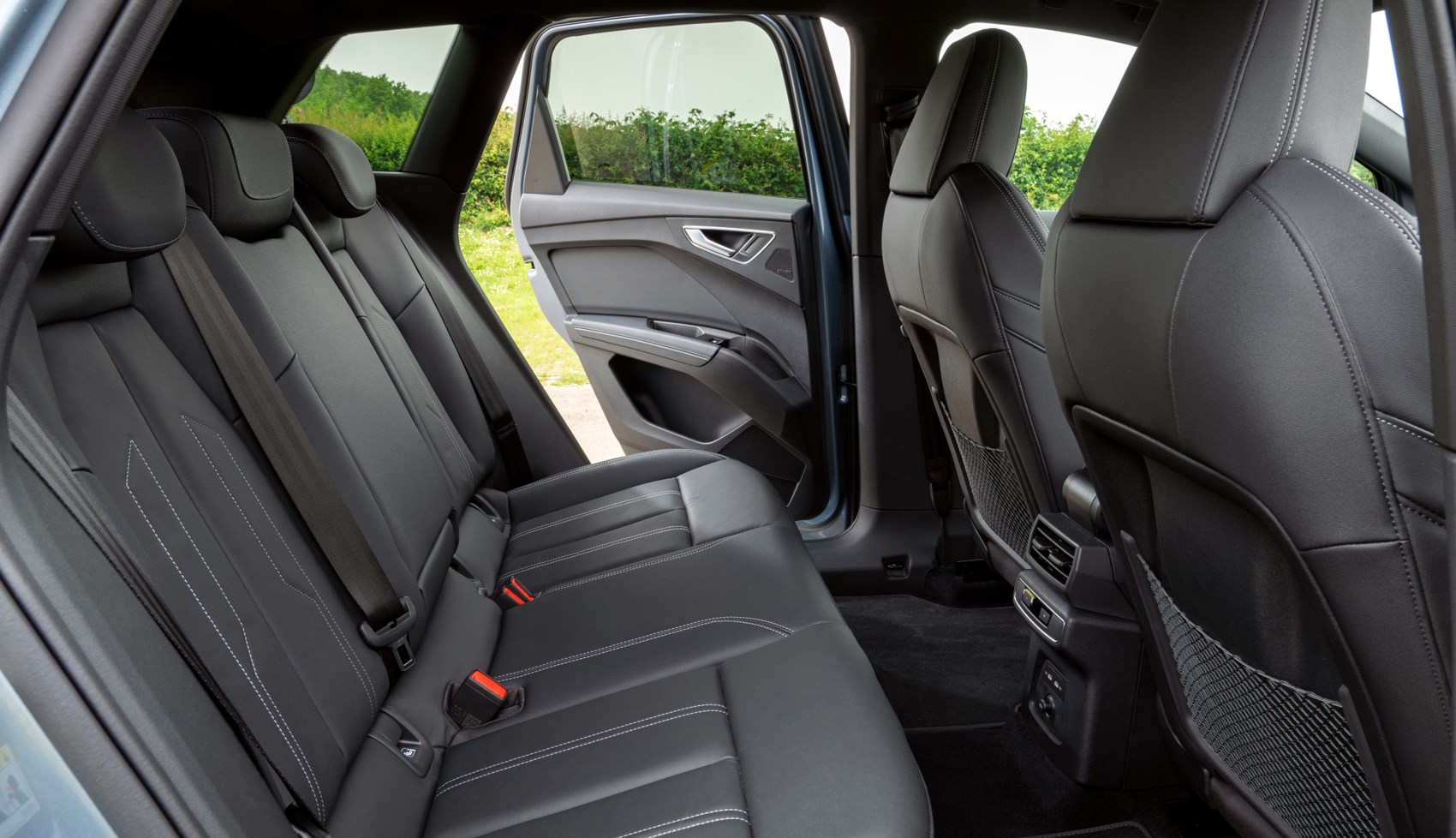
The Audi is roomy inside, with lots of space available. As well as those double-deck door cubbies in the front, there are storage slots for things beneath the drive shifter, two large cupholders and more storage further back. The unpadded armrest and centre console where long legs typically come to rest isn’t great, though. Rear space is good, even for adults, helped by the car’s flat floor. The boot space is a good size at 520 litres, but there’s no frunk here.
What’s it like to drive?

There is no start-up rigmarole. Like in a Tesla or a Polestar 2, merely approach the car, unlock, slide in, foot on the brake, nudge the stubby gearlever to D and off you set. No need to prod the starter button, mess with parking brakes or anything. It’s all very easy.
Overall, it feels well-judged. Acceleration is smooth and more than enough in the lesser 45 model, with the 55 not really feeling like it adds much extra. There aren’t any Tesla-style fireworks when you accelerate hard, but it makes up for that with impressive refinement at speed. It’s hushed at low speeds as well as on the motorway. There aren’t any sparks or smiles when you drive a Q4, but it’s good.
Driving the Q4 is pleasant enough, and relatively unmemorable unless you sit over the rear axle – but we’ll get to that in a bit. The general dynamics are perfectly fine. The steering has some accuracy and sweetness to it, but this isn’t exactly a hot hatch to hoon around, and the ride errs on the side of firm and plump. Fine enough if you opt for the smaller-wheeled Sport and S line models, but the Black Edition’s 21s introduce some fierce jolts at low speeds. That’s especially true for rear passengers who bear the brunt of them.
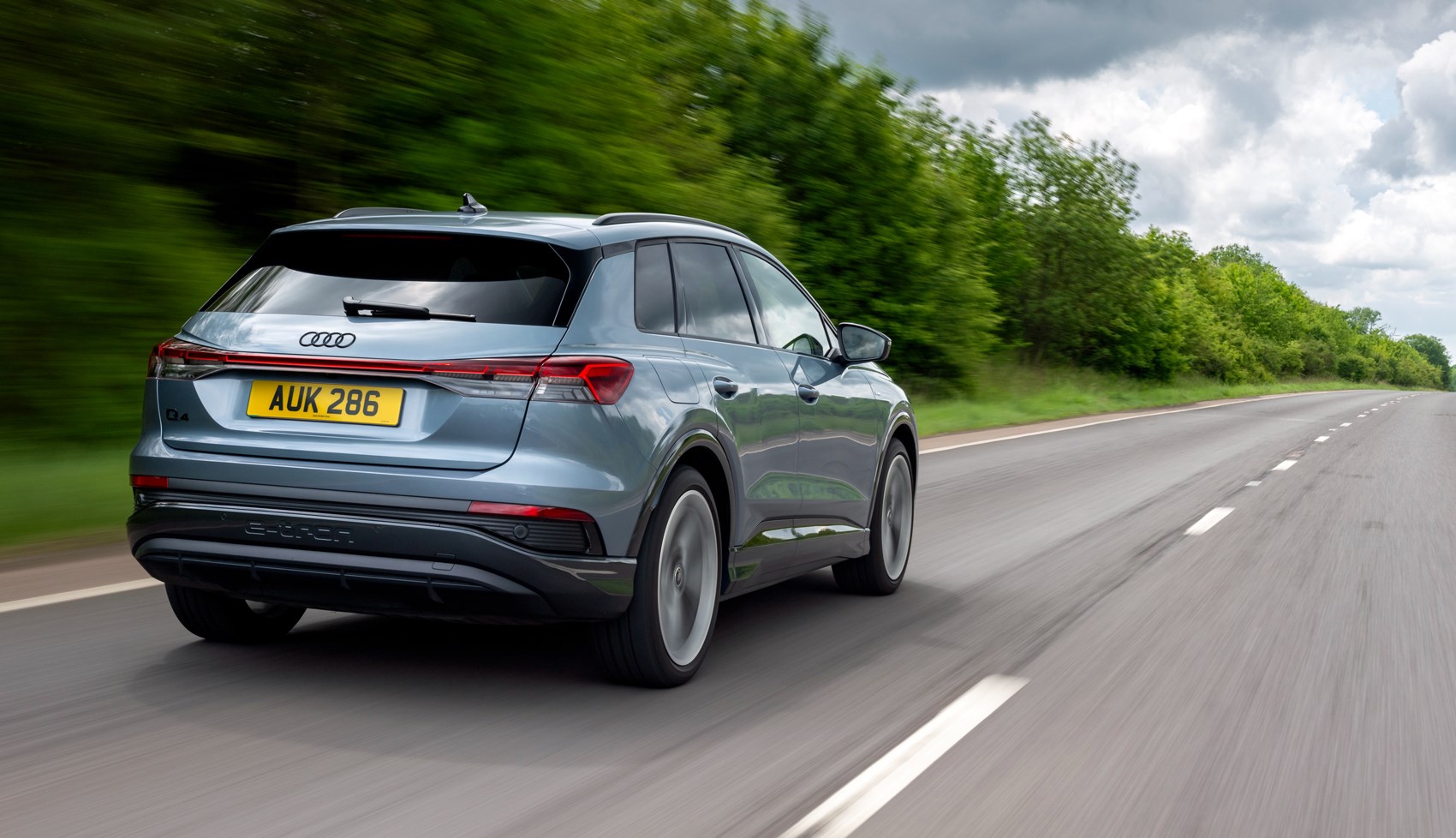
The range meter proves remarkably accurate. It adjusts to your driving style and environment, and we typically found both the 45 and 55 models will easily crack 300 miles on a charge – even during faster cross-country trips and motorway journeys.
Like many electric cars, the driving enjoyment falls away with the left pedal: Audi hasn’t quite modulated the balance between regenerative and physical braking all that well here, so you often have less breaking power than you’d expect – and certainly less feel.
The regen itself is very useful, including the ability to coast on the motorway and a slick application of adaptive regen that reacts to what’s ahead (i.e. upping regen if it notices a lowering of the speed limit, or if you get too close to the car in front or slackening off on an open motorway). You can also use the paddles to increase and reduce the amount of regen, and it proves useful when you’re coasting downhill etc.
Still, the regen seemingly comes at the vast expense of the physical brakes, which simply don’t feel up to scratch and are hard to modulate via the pedal.
Before you buy
We’d advise keeping the costs down as much as possible here if you’re set on a Q4, namely as the Sport is well equipped with 19-inch wheels, LED headlights, heated seats, parking sensors and a rear camera, and adaptive cruise. S line and Black Edition models are more about the look.
Naturally, at this size and given the Q4’s DNA links to other cars that run on the VW Group MEB platform, the closest rivals are the Skoda Enyaq and VW ID.4. The Enyaq has a larger boot and doesn’t feel any less posh to sit in – and yet an entry-level model comes in significantly cheaper than the Audi. We prefer the overall package of Kia’s EV6 and Hyundai Ioniq 5 more than the Audi, too.
Verdict: Audi Q4 e-Tron
It’s quite easy to see why the Audi’s Q4 e-Tron is the second best-selling electric SUV in the UK, because it has plenty going for it. Its range is competitive (post-update) in its class and it’s a calm and polite car to surge along in. The interior feels solid and impressively roomy inside and it oozes competence and quality.
But it’s pretty average unremarkable in many other areas. It’s overtly conservative – and therefore not that exciting – to drive, and some interior usability niggles dampen the experience a little. Unless you really want that Audi badge, plenty of other cars like the Enyaq, Ioniq 5 and EV6 can compete or even better the Audi for less.
Specs are for a Q4 e-Tron 45 Sport